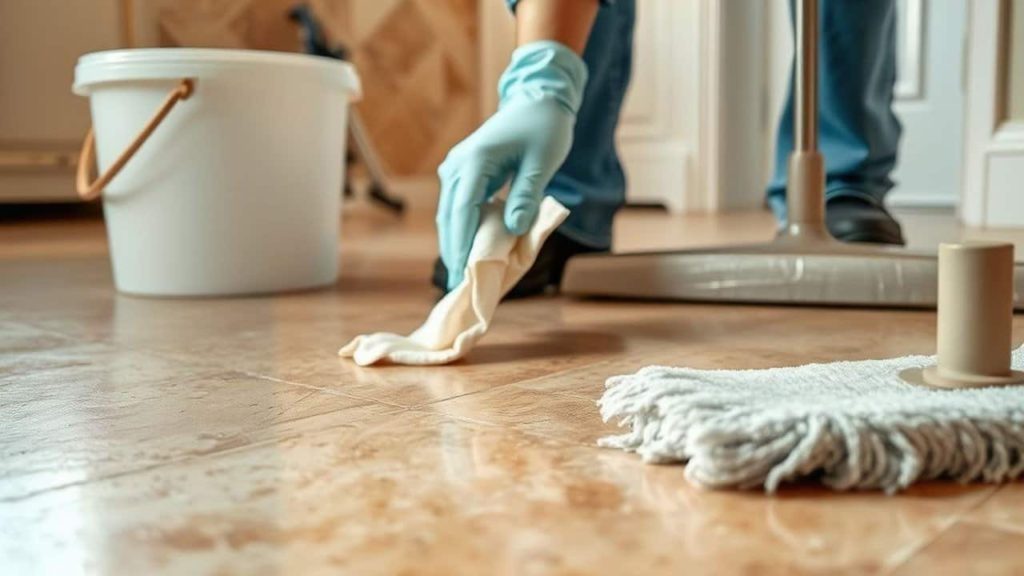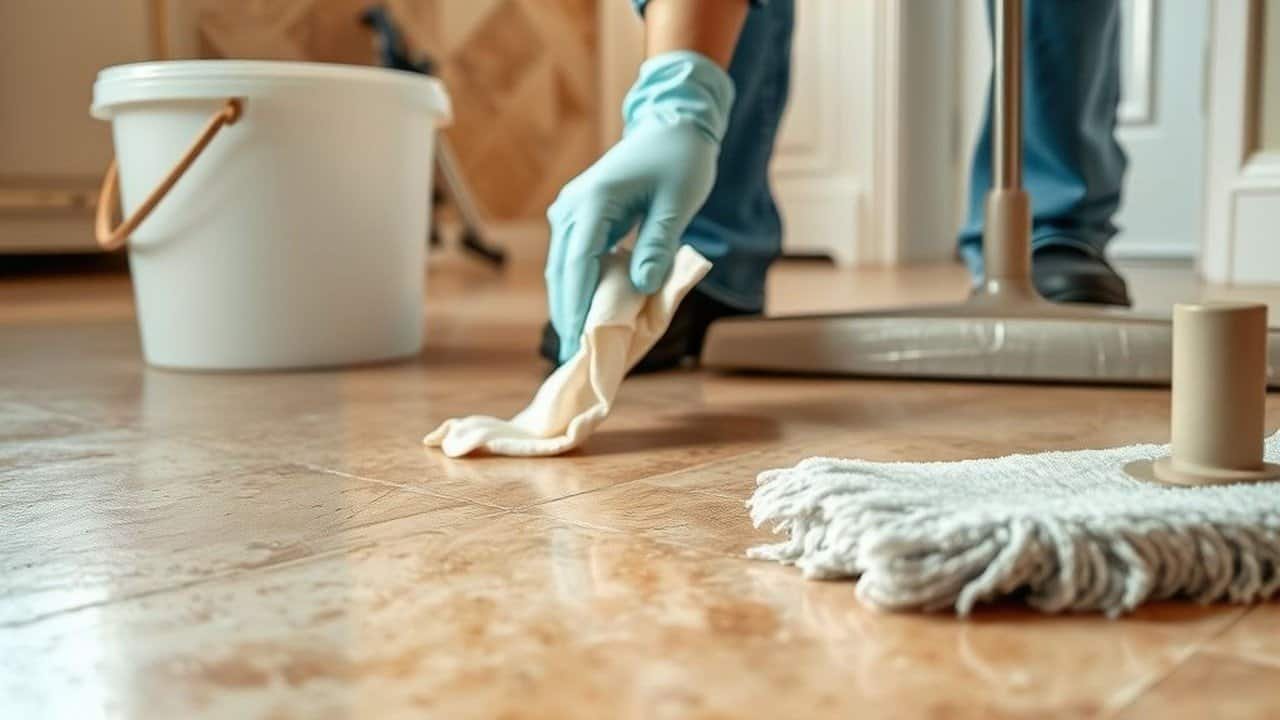
Uncover the Unique Qualities of Travertine and the Best Sealers for Protection
Exploring the Composition and Natural Formation of Travertine Stone
Travertine is a stunningly elegant natural stone that belongs to the limestone family, formed through the accumulation of mineral deposits around hot springs. This remarkable stone showcases a porous texture and a rich palette of earthy hues, making it a highly sought-after choice for flooring and wall cladding in both residential and commercial spaces throughout the United Kingdom. Its striking visual charm, coupled with remarkable durability, positions travertine as a preferred material for both indoor and outdoor settings, adding an air of sophistication to any environment that captivates both designers and homeowners alike.
The adaptability of travertine is evident in a wide array of iconic landmarks and contemporary residences across the UK. From the grandiose Roman baths in Bath to the quaint, rustic pathways of countryside cottages, travertine offers a timeless aesthetic that resonates with many property owners. However, the beauty of travertine has the potential to diminish over time without appropriate care and maintenance, underscoring the essential role that sealers play in safeguarding its surface.
A sealer acts as an essential protective barrier against stains, spills, and moisture, ensuring that the natural beauty of travertine remains unblemished. Yet, like any protective coating, sealers may degrade over time, necessitating their removal to preserve the stone’s pristine condition. Understanding the safest way to strip old sealers off travertine is vital for maintaining the surface's immaculate appearance, allowing the stone to radiate its inherent beauty without any flaws or degradation.
Expert Recommendations: Essential Products for Daily Travertine Care
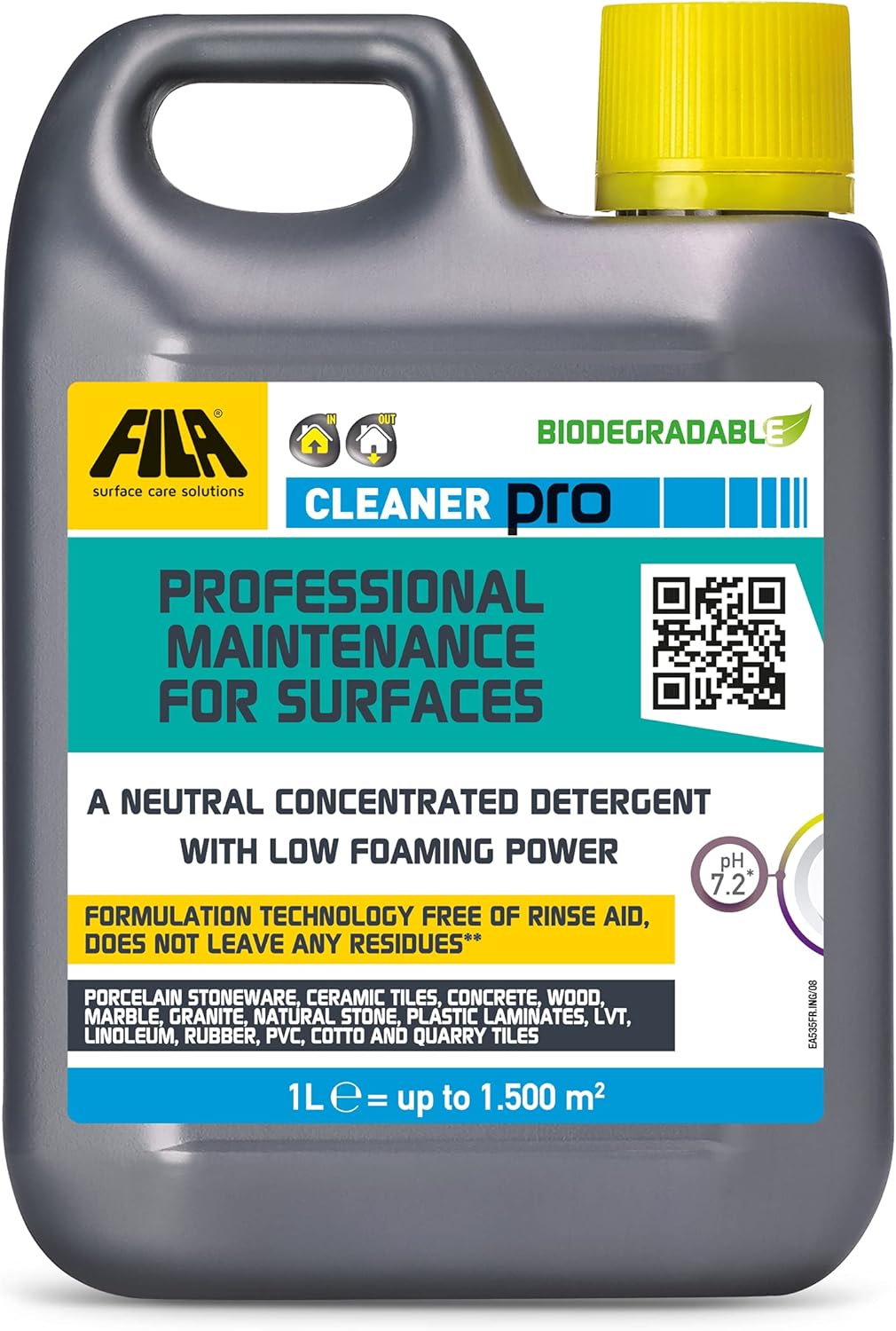
Fila Pro Floor Cleaner
|
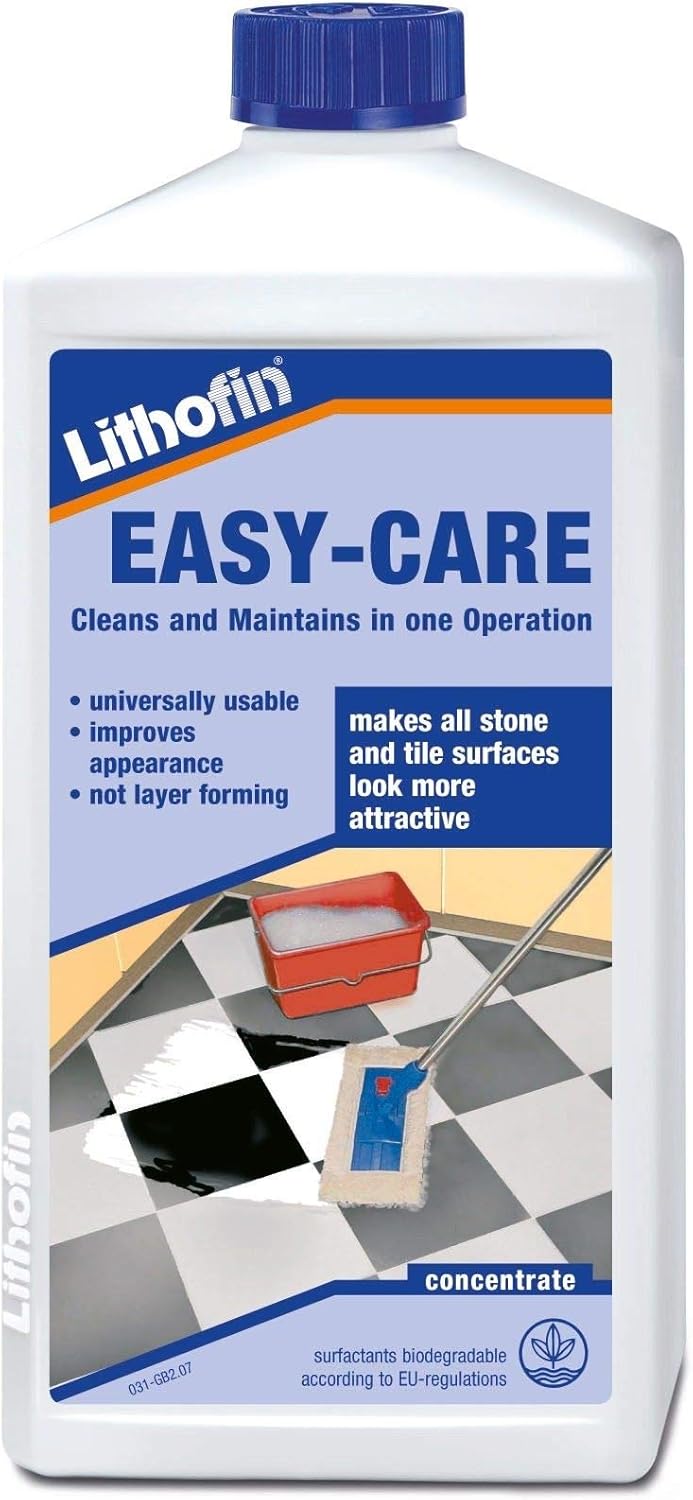
Lithofin Easy Care
|
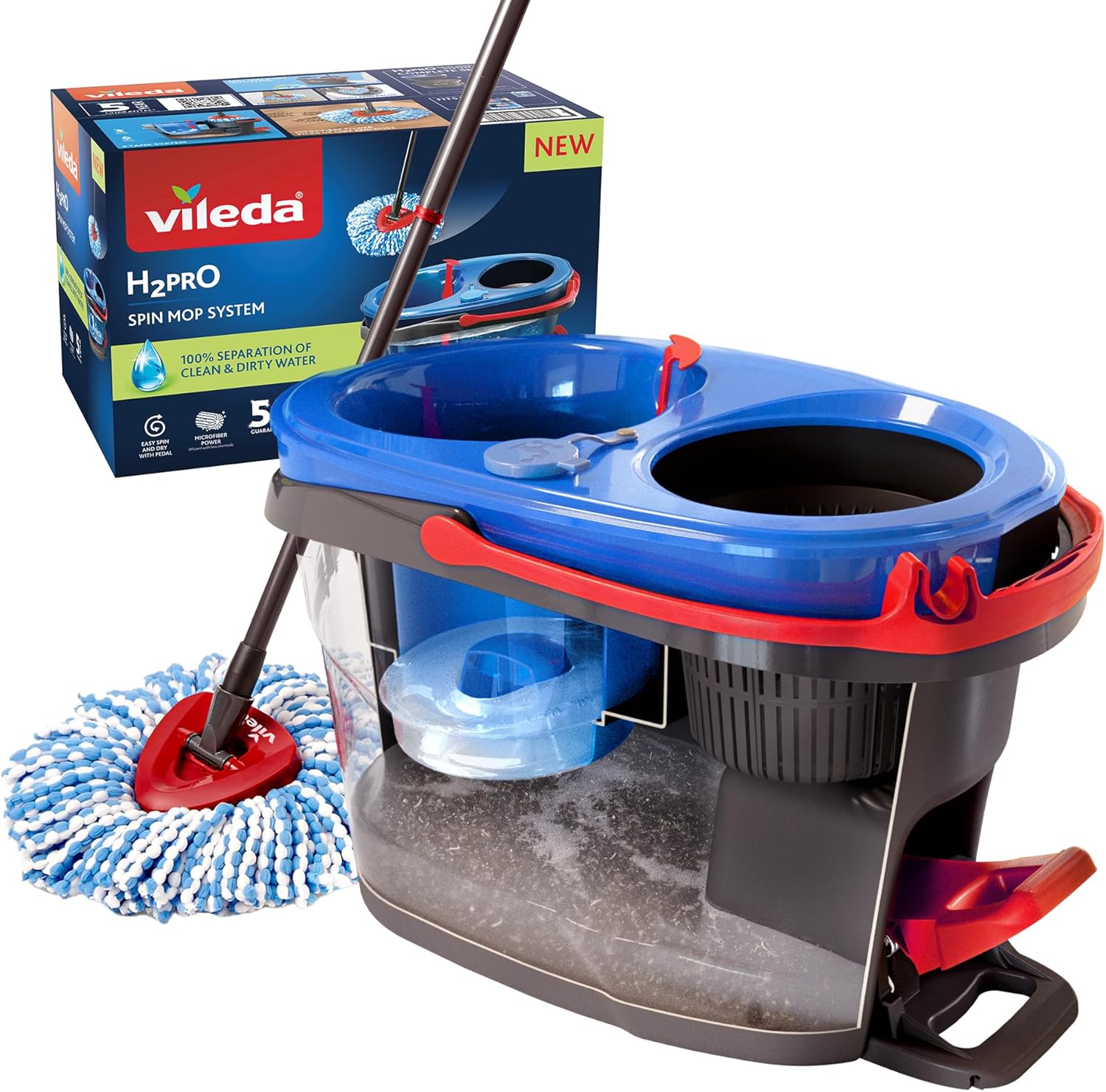
Vileda H2PrO Spin Mop System
|
Understanding the Different Categories of Sealers for Travertine
Sealers are instrumental in protecting travertine surfaces, serving as a barrier that inhibits the penetration of stains and moisture. There are primarily two main categories of sealers frequently applied to travertine: penetrating sealers and topical sealers.
Penetrating sealers are specifically formulated to seep into the stone’s pores, establishing a protective barrier that resists liquid absorption while maintaining the stone’s natural appearance and texture. This type of sealer is particularly well-suited for outdoor settings, as it enables the stone to breathe while providing protection against water and other potentially damaging substances. Given the UK’s variable climate, utilising penetrating sealers offers robust defence against rain, humidity, and other environmental elements.
In contrast, topical sealers create a protective film that coats the stone's surface. These sealers can produce a glossy finish that enhances the natural allure of travertine, making them a popular option for indoor applications. However, topical sealers tend to wear off more rapidly and may require more frequent reapplication, particularly in high-traffic areas. Recognising the distinctions between these two types of sealers empowers homeowners to make informed choices regarding their travertine surfaces.
Understanding the Importance of Removing Old Sealers for Travertine Maintenance
The process of eliminating old sealers is a critical aspect of travertine maintenance that should not be overlooked. With time, sealers can degrade, resulting in a dull, discoloured, and generally unappealing appearance. The accumulation of dirt, grime, and other contaminants can worsen the effects of a failing sealer, leading to the stone appearing tired and worn.
If left unattended, old sealers can trap moisture beneath the surface, creating a conducive environment for mould and mildew to thrive. This situation not only presents health risks but may also result in costly repairs and restoration efforts. By understanding the safest way to strip old sealers off travertine, homeowners can efficiently revitalise their surfaces, restoring the stone’s intrinsic beauty and prolonging its lifespan.
Regular upkeep, which includes the removal of outdated sealers, is crucial for preventing the accumulation of contaminants and ensuring that travertine remains visually appealing and structurally sound. With the right care, travertine can continue to serve as a stunning feature in any home, reflecting the charm of traditional British architecture.
Essential Safety Procedures for Effective Removal of Sealers
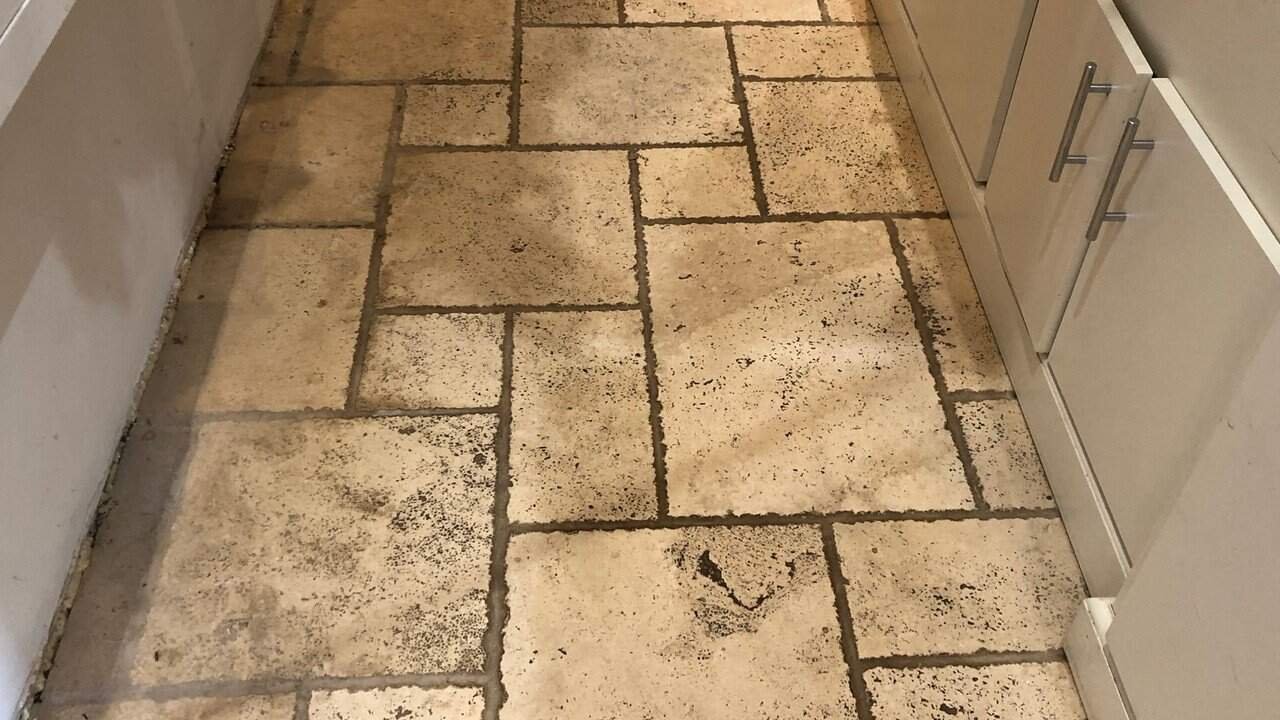
The Importance of Wearing Protective Gear During Sealer Removal
When embarking on the task of stripping old sealers from travertine, prioritising safety should be your top concern. The chemicals present in sealer removers can pose significant hazards, making it essential to wear appropriate protective gear. To protect your well-being, start by donning gloves, which will shield your skin from potential chemical burns or irritations.
Moreover, goggles are crucial, particularly when handling liquids that may splash during the application or removal process. Safeguarding your eyes from harsh chemicals is imperative, as accidental exposure can lead to severe irritation or injury. Additionally, wearing a mask is paramount to prevent inhalation of harmful fumes, especially in inadequately ventilated areas. By ensuring you are properly equipped, you not only protect your health but also gain peace of mind while you work.
It is also recommended to wear old clothing or an apron, as the chemicals can stain fabrics. This way, you can work without the worry of damaging your attire. Taking these precautionary measures will enhance your safety and improve the efficiency of the sealer removal process.
Ensuring Proper Ventilation During the Sealer Removal Process
Effective ventilation is a crucial safety measure when stripping old sealers from travertine. Many chemical removers release vapours that can be harmful if inhaled. Therefore, it is vital to work in a well-ventilated environment to reduce the concentration of these fumes in the air.
Open windows and doors to create a cross-breeze, allowing fresh air to circulate while the chemicals are in use. If feasible, utilise fans to enhance airflow, aiding in the expulsion of fumes from the workspace. In cases where outdoor ventilation is not possible, consider employing an air purifier fitted with a HEPA filter to capture harmful particles and improve air quality.
Furthermore, it’s wise to take regular breaks during the process to step outside for fresh air, thereby minimising your exposure to lingering vapours. Maintaining good ventilation not only promotes safety but also maximises the overall efficacy of the stripping process, ensuring that the chemicals function as intended without the hindrance of vapour accumulation.
Practising Safe Handling of Chemicals During Sealer Removal
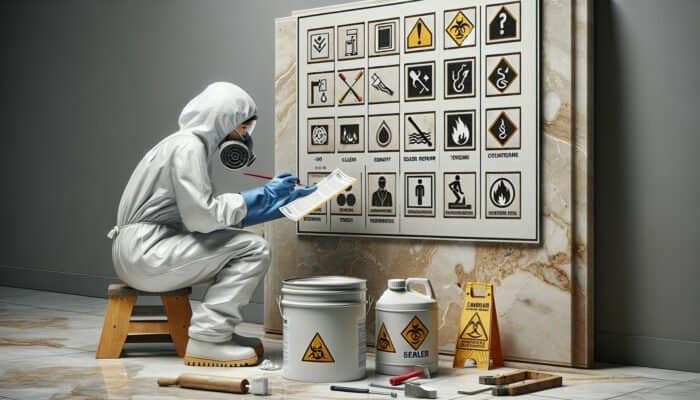
Handling chemicals safely is paramount when stripping old sealers from travertine. Always consult the manufacturer’s instructions and safety data sheets for the products you plan to utilise. These documents provide vital information regarding safe handling, potential hazards, and appropriate disposal methods.
When applying the sealer remover, use a designated container and tools meant for chemical use to avoid any reactions with incompatible materials. Ensure that your workspace is devoid of any flammable items and that children or pets are kept at a safe distance.
Moreover, it is essential to adhere to local regulations regarding the disposal of chemical products. Many regions have specific guidelines for disposing of hazardous materials, which may require taking them to a designated waste facility. By following safety practices and handling chemicals responsibly, you can protect yourself and the environment while effectively removing old sealers.
Selecting the Most Suitable Sealer Remover for Travertine
Exploring the Different Types of Sealer Removers Available
Choosing the appropriate sealer remover is a crucial step in the process of stripping old sealers from travertine. There are primarily two categories of sealer removers: solvent-based and water-based. Each type presents its own benefits and considerations, depending on the nature of the sealant that has been previously applied.
Solvent-based removers are often more potent and effective at breaking down heavy-duty sealers. They are particularly advantageous for penetrating sealers, which can be more resistant to removal. However, they may emit strong fumes and pose health risks if not handled correctly. Therefore, ensuring adequate ventilation and employing appropriate protective gear is essential when working with these products.
On the other hand, water-based removers are typically milder and less toxic, rendering them a safer option for indoor use. They effectively eliminate topical sealers that have developed a thick build-up over time. While they may require longer to work compared to solvent-based alternatives, their ease of use and reduced environmental impact make them attractive for many homeowners seeking a safer option.
Understanding the specific type of sealer used on your travertine will assist in selecting the most effective remover, ensuring a successful stripping process without risking damage to the stone.
Why Environmental Considerations Should Influence Your Choice of Sealers
In today's eco-conscious world, opting for environmentally-friendly sealer removers is advantageous not only for personal health but also for the planet. Many conventional solvents contain harsh chemicals that can adversely affect aquatic life and contribute to air pollution. By selecting biodegradable and non-toxic products, you can reduce your environmental footprint while effectively stripping old sealers from your travertine.
Seek out sealer removers that are labelled as environmentally friendly. These products are designed to decompose into less harmful substances, ensuring that any residues left after use do not endanger the environment. In the UK, numerous suppliers offer eco-conscious options, providing homeowners with the reassurance that they are protecting both their homes and the planet at the same time.
Furthermore, using eco-friendly products often results in encountering fewer harmful fumes, creating a safer and more pleasant working environment. By making informed decisions regarding the chemicals you utilise, you contribute to a more sustainable future while preserving the beauty of your travertine surfaces.
Ensuring Compatibility with Travertine When Selecting Removers
Guaranteeing compatibility between the chosen sealer remover and travertine is vital to prevent damaging this delicate stone. Travertine is porous and may be sensitive to harsh chemicals, which can lead to etching or discolouration. Therefore, it is crucial to carefully examine product labels and select removers specifically formulated for natural stone surfaces.
Conducting a test on a small, inconspicuous area before full application can provide insights into how the travertine will respond. This patch test allows you to determine whether the product causes any discolouration or damage, enabling you to make an informed decision before proceeding with the entire surface.
Additionally, consulting professionals or examining reviews from other users can offer further insights into the effectiveness and safety of specific products. By ensuring that the remover you select is compatible with travertine, you can confidently engage in the stripping process, safeguarding the integrity and beauty of your stone.
Mastering Application Techniques for Optimal Sealer Removal Results
Correct application techniques are fundamental for achieving the desired results when stripping old sealers from travertine. Begin by thoroughly cleaning the surface to remove any loose dirt or debris, as this will enhance the effectiveness of the sealer remover.
Once the surface is adequately prepared, apply the sealer remover uniformly, adhering to the product’s instructions concerning the appropriate thickness and application method. For optimal outcomes, utilise a brush or roller to ensure a consistent layer across the travertine, avoiding puddles that can lead to uneven stripping.
Allow the remover to sit for the recommended duration, as this contact time is vital for effectively breaking down the old sealer. After the waiting period, use a scrub brush or scraper to gently remove the softened sealer, taking care not to scratch the travertine surface. Lastly, thoroughly rinse the area with clean water to eliminate any residue from the sealer remover, ensuring that the stone is clear and ready for subsequent steps.
Exercising patience and attention to detail throughout the application process will yield significant benefits, ensuring that your travertine is restored to its original magnificence.
A Comprehensive Step-by-Step Guide to Effectively Strip Sealers from Travertine
Preparing the Travertine Surface for the Sealer Removal Process
Before initiating the sealer removal process, it is crucial to meticulously prepare the travertine surface to achieve optimal results. Commence by sweeping or vacuuming the area to eliminate any loose dirt and debris. This preliminary cleaning step is vital, as leftover particles can obstruct the effectiveness of the sealer remover, potentially resulting in uneven application.
Subsequently, wash the travertine with warm water and a mild detergent to eradicate any oils or contaminants that may have accumulated over time. Avoid utilising harsh chemicals that could harm the travertine. After washing, rinse the surface thoroughly with clean water to ensure no detergent residue remains. Allow the surface to dry completely prior to applying the sealer remover, as moisture can dilute the chemicals’ effectiveness and hinder the stripping process.
Once the travertine is dry, inspect the surface for any cracks or damage. Addressing these concerns beforehand can avert further complications during the sealer removal process. By taking the time to prepare adequately, you establish a solid foundation for a successful stripping process, ultimately preserving the integrity of your travertine.
Applying the Sealer Remover for Maximum Effectiveness
With the surface prepared, it’s time to apply the sealer remover. Begin by carefully reviewing the manufacturer’s instructions to grasp the proper application method and necessary safety precautions. Using a brush or roller, apply an even coat of the remover across the travertine surface, ensuring uniform coverage.
Exercise caution to avoid applying the remover too thickly, as excessive amounts can lead to pooling, potentially damaging the stone. Instead, aim for a moderate layer that will effectively penetrate the existing sealer without compromising the travertine beneath.
As you proceed, pay attention to the dwell time recommended by the manufacturer. This waiting period is essential for allowing the remover to penetrate and dissolve the old sealer effectively. Depending on the product, you may need to leave it on for anywhere from 15 minutes to several hours. After this time, check a small area to assess the effectiveness of the remover. If the sealer has softened adequately, you can move on to the next step.
Thoroughly Eliminating the Old Sealer from Travertine
Once the sealer remover has had sufficient time to work, it’s time to remove the old sealer from the travertine. Begin by using a scrub brush or a plastic scraper to gently lift the softened sealer. Avoid using metal scrapers, as they can scratch or damage the travertine. Instead, opt for tools specifically designed for delicate surfaces.
As you work, ensure to remove all remnants of the old sealer, making certain that no residues remain that could interfere with the re-sealing process later on. After extracting as much sealer as possible, thoroughly rinse the area with clean water to wash away any lingering chemicals and debris.
Following this, allow the travertine to dry completely. This is a crucial step, as any moisture left on the surface can impact the adhesion of the new sealer that will be applied subsequently. By meticulously removing the old sealer and cleansing the surface, you effectively prepare your travertine for the next stages of restoration.
Avoiding Common Mistakes During the Sealer Removal Process
Ensuring the Use of Suitable Products for Travertine
One of the most prevalent mistakes made during the sealer removal process is the utilisation of inappropriate products. Many homeowners may be tempted to employ harsh chemicals or abrasive cleaners that can inflict damage on the travertine surface. Such products can result in lasting harm, including etching or discolouration, which can be difficult or impossible to reverse.
To prevent this error, it is essential to diligently select a sealer remover specifically designed for natural stone surfaces. Always read the labels and product descriptions to ensure compatibility with travertine. If in doubt, seeking advice from professionals or consulting with suppliers who specialise in stone care can provide invaluable insights into the safest and most effective products for your travertine.
Furthermore, avoid substituting household cleaners for conventional sealer removers. While they may seem innocuous, they can contain ingredients that could harm the stone. Being vigilant regarding the products you use can help avert costly damage and ensure a successful stripping process.
The Importance of Proper Rinsing After Removing Old Sealers
After eliminating the old sealers, it’s essential to rinse the surface thoroughly. Insufficient rinsing can lead to residue accumulation, which may cause staining or damage to the travertine over time. Even minor traces of sealer remover left behind can adversely affect the effectiveness of any new sealer applied subsequently.
To ensure a thorough rinse, use an ample amount of clean water and a soft cloth or mop to wipe down the surface. It may be helpful to rinse multiple times to guarantee all residues have been cleared. Additionally, inspect the travertine following rinsing to confirm that no residue remains. Dedicating time to perform this step carefully will help maintain the beauty and integrity of your travertine.
Adhering to Safety Protocols Throughout the Sealer Removal Process
Neglecting to observe safety measures during the stripping process can result in serious consequences. Many homeowners underestimate the dangers associated with the chemicals used in sealer removers, which can lead to accidents or health issues. Always prioritise safety by ensuring you wear the appropriate protective gear, including gloves, goggles, and masks, as previously discussed.
Moreover, it’s crucial to read and comprehend the safety data sheets for all products used. These documents outline potential hazards and provide guidance for safe handling. Ignoring these precautions not only jeopardises your safety but can also lead to environmental harm. By taking safety seriously, you protect yourself and create a safer working environment while effectively restoring your travertine surfaces.
Post-Stripping Care for Travertine Surfaces
The Importance of Ensuring Complete Surface Drying
After the old sealer has been removed and the travertine has been thoroughly rinsed, it is essential to allow the surface to dry completely before applying a new sealer. Trapped moisture beneath a new sealer can lead to complications, including improper adhesion and potential damage to the stone.
To facilitate drying, ensure the area is well-ventilated. Open windows or utilise fans to promote airflow, allowing moisture to evaporate more quickly. The drying time for travertine may vary depending on humidity and temperature; however, it’s advisable to wait at least 24 hours to ensure complete dryness.
A comprehensive inspection of the surface is also vital before proceeding. The travertine should feel dry to the touch, with no damp spots remaining. Taking this extra time to ensure the surface is arid will significantly enhance the efficacy of the new sealer, resulting in a durable finish.
Conducting a Detailed Inspection for Damage
Once the surface has dried, it’s time to inspect the travertine for any damage that may have occurred during the stripping process. Carefully examine the stone for signs of etching, scratches, or discolouration, as these issues need to be addressed prior to applying a new sealer.
If any damage is detected, consider consulting a professional who specializes in travertine restoration. They can provide guidance on the best methods for repairing any imperfections. Promptly addressing these concerns will help ensure that your travertine not only looks good but remains structurally sound.
Furthermore, take this opportunity to evaluate how well the travertine has cleaned up. If there are still areas that appear discoloured or stained after stripping, it may be worth investing time in further cleaning or considering a different sealer removal method. A thorough inspection is a crucial step that lays the foundation for the successful re-sealing of your travertine.
Applying a New Sealer for Maximum Protection
With the old sealer removed and the surface thoroughly inspected, you are now ready to apply a new sealer. Selecting the right sealer is critical for protecting the travertine and enhancing its natural beauty. Consider the specific needs of your space—whether it is located in high-moisture areas or high-traffic zones—and choose a sealer that meets those requirements.
Follow the manufacturer’s instructions for application, ensuring the surface is covered evenly. Use a brush or roller to thoroughly coat all areas, being careful not to overload the applicator to prevent drips. Depending on the type of sealer chosen, multiple coats may be necessary to achieve the desired coverage. Be sure to allow adequate drying time between applications, as specified in the product instructions.
After applying the new sealer, allow the travertine ample time to cure before regular use. This will ensure that the sealer bonds effectively and provides optimal protection against future stains and moisture.
Cleaning Up Residue Before Sealing the Travertine
Following the stripping process and prior to applying a new sealer, it’s essential to ensure that any residues left from the stripping process are thoroughly cleaned off. Use a mild detergent mixed with warm water and a soft brush or cloth to gently wipe down the travertine surface.
This step is vital for preparing the stone for sealing. Remaining residues can interfere with the adhesion and performance of the new sealer, leading to potential complications later on. Be diligent in your cleaning, rinsing the surface multiple times to ensure that all soap residues are eliminated.
After cleaning, allow the travertine to dry completely. Proper preparation of the surface will significantly enhance the longevity and effectiveness of the new sealer, maintaining the beauty and integrity of your travertine for many years to come.
The Benefits of Polishing Travertine to Enhance Its Aesthetic Appeal
After the new sealer has cured, consider polishing the travertine to restore its shine and smoothness. Polishing can elevate the stone’s natural beauty, making it appear vibrant and fresh. Use a polishing compound specifically designed for natural stone, and apply it according to the manufacturer’s instructions.
This step not only enhances the appearance of the travertine but also adds an additional layer of protection against stains and damage. Regular polishing can help maintain the stone’s lustre, making it easier to clean and keep looking its best.
Incorporating polishing into your maintenance routine can significantly boost the overall aesthetic appeal of your travertine surfaces, ensuring they remain a stunning feature in your home for many years to come.
Frequently Asked Questions About Travertine Maintenance
Which type of sealer is recommended for travertine surfaces?
The optimal type of sealer for travertine is generally a penetrating sealer, which provides protection while allowing the stone to breathe. This feature is particularly crucial for outdoor applications.
How often should I plan to strip and reseal my travertine?
It’s usually recommended to strip and reseal travertine every 1-3 years, depending on foot traffic levels and environmental conditions. Regular maintenance can considerably extend the lifespan of the surface.
Is it safe to use vinegar for cleaning my travertine?
No, vinegar is acidic and can damage travertine. Instead, opt for a pH-neutral cleaner specifically formulated for natural stone to avoid etching.
How can I tell if my travertine sealer needs reapplication?
If water no longer beads on the surface or if stains penetrate quickly, it may indicate that it’s time to strip and reapply the sealer to maintain effective protection.
Is using a power washer on travertine surfaces advisable?
Utilising a power washer on travertine is generally not recommended, as the high-pressure water can damage the porous surface, leading to etching or cracking.
What is the best technique for applying sealer remover?
Apply sealer remover using a brush or roller for an even coat, following the manufacturer’s instructions regarding dwell time and application technique.
Can I use a scrub brush on travertine surfaces?
Yes, a soft scrub brush can be used to remove old sealer. However, avoid using abrasive brushes that may scratch the surface.
What is the typical drying time for travertine after sealer removal?
The drying time for travertine after sealer removal can vary, but it generally takes at least 24 hours for the surface to dry completely.
What should I do if I accidentally damage my travertine?
If you damage your travertine, consult a professional stone restoration specialist who can evaluate the damage and suggest appropriate repair solutions.
What is the safest method for removing old sealers from travertine?
The safest way to remove old sealers from travertine involves using compatible, eco-friendly sealer removers, wearing protective gear, ensuring proper ventilation, and closely following the manufacturer’s guidelines during the application process.
The Article What is the Safest Way to Strip Old Sealers Off Travertine first found on https://www.abbeyfloorcare.co.uk
The Article Safest Methods for Stripping Old Sealers from Travertine appeared first on https://fabritec.org
The Article Safest Methods to Remove Old Sealers from Travertine Was Found On https://limitsofstrategy.com
